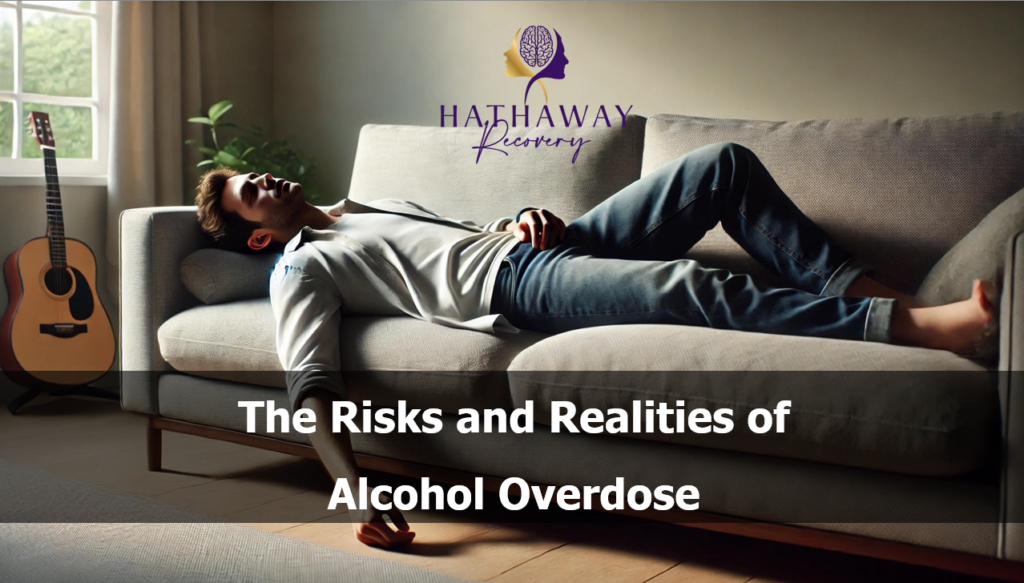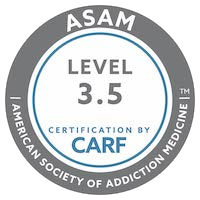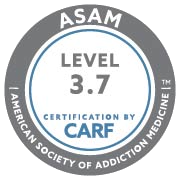
Drinking often accompanies social events, whether celebrating at parties, cheering on a favorite sports team, or relaxing with colleagues after work. For many, alcohol is part of the social ritual, enhancing the joy of these moments. However, drinking can sometimes escalate into risky levels, especially when taken in large quantities within a short period. Excessive alcohol intake impairs essential functions such as motor skills, decision-making, and impulse control, making individuals more prone to accidents, injury, or harmful behaviors.
When consumption goes too far, it can lead to a dangerous and potentially fatal condition: alcohol overdose, a serious consequence that many may overlook in the thrill of the moment. Alcohol overdose doesn’t just happen out of nowhere; it’s the result of alcohol levels in the bloodstream becoming so high that they start to inhibit areas of the brain responsible for basic life-support functions.
These vital functions, including breathing, heart rate, and body temperature regulation, are compromised as the brain’s control centers become overwhelmed. The symptoms that follow—confusion, unconsciousness, vomiting, seizures, slowed breathing, irregular heart rate, and cold, clammy skin—are signals of a critical situation. Without immediate intervention, the suppression of life-support functions can lead to long-term brain damage or even death. Thus, understanding the factors contributing to alcohol overdose is crucial to recognizing when drinking has gone too far and to taking preventive measures.
The line between drinking that results in impairment and drinking that becomes life-threatening varies significantly among individuals. Factors such as age, alcohol tolerance, gender, the speed at which one drinks, and whether food has been consumed can all influence the risk of overdose. Combining alcohol with certain medications, including opioids, sedatives, and even over-the-counter drugs like antihistamines, adds an additional layer of danger. These substances can work synergistically with alcohol to further suppress critical life-support functions, amplifying the effects of alcohol. By understanding these risk factors, individuals can make more informed choices about their drinking behaviors and better protect themselves from unintended, life-threatening consequences.
High-Risk Groups for Alcohol Overdose
Anyone who consumes large quantities of alcohol quickly is at risk of an overdose, but binge and high-intensity drinkers face especially high dangers. Binge drinking, defined as a pattern that raises blood alcohol concentration (BAC) to 0.08% or higher, typically occurs after four drinks for women or five for men within about two hours. High-intensity drinking escalates this pattern further, often involving alcohol consumption at twice these levels. Teenagers and young adults, known for social drinking and experimentation, are particularly vulnerable to alcohol overdose due to their tendency to consume large amounts quickly.
Lacking the experience or awareness of personal limits, younger individuals may underestimate the time needed for alcohol to be processed by the body, leading to rapid increases in BAC and overwhelming critical bodily functions. These behaviors are particularly concerning because, for many young adults, social drinking contexts may make it challenging to recognize when their own or a friend’s drinking has reached dangerous levels.
The dangers associated with high BAC levels aren’t just limited to young people; adults engaging in binge or high-intensity drinking are also at risk. As BAC rises, alcohol’s effects intensify, and the risks associated with drinking multiply. Even minor increases in BAC can impair coordination, create feelings of nausea, and cloud judgment, leading individuals to place themselves in risky situations, such as getting behind the wheel, suffering from falls, or engaging in unsafe behaviors.
When BAC reaches extreme levels, the consequences become more severe, including blackouts, memory gaps, loss of consciousness, and in some cases, death. As BAC continues to rise, alcohol can suppress the body’s ability to perform automatic responses like the gag reflex, which prevents choking. An unconscious person who has consumed a significant amount of alcohol may be at risk of choking on their own vomit, leading to asphyxiation if not monitored carefully. This highlights the importance of understanding BAC and the potential for risk at every level of intoxication.
Recognizing the Signs of Alcohol Overdose
Recognizing the signs of an alcohol overdose can be the difference between life and death, as timely intervention can prevent tragic outcomes. Common symptoms include mental confusion, stupor, and difficulty staying awake or an inability to wake up. These mental signs are often accompanied by physical symptoms, such as vomiting, seizures, irregular breathing (fewer than eight breaths per minute), a slowed heart rate, and clammy or bluish skin. Another serious indicator is the absence of a gag reflex, a critical response that helps prevent choking. If someone is exhibiting these symptoms, it’s essential to call 911 immediately. Many people mistakenly believe that an unconscious person will “sleep it off,” but BAC can continue to rise as alcohol from the stomach and intestines enters the bloodstream, posing ongoing risks even after they’ve stopped drinking.
Knowing these symptoms and acting on them quickly can make a vital difference. When it comes to alcohol overdose, time is of the essence, and assuming that someone is simply “sleeping off” their drinking can have fatal consequences. If you suspect that someone may be experiencing an alcohol overdose, take action immediately by seeking emergency medical help. Delaying intervention could lead to severe health outcomes or even death, underscoring the importance of understanding these warning signs and being prepared to respond.
Know the Danger Signs and Act Quickly

Taking Immediate Action to Prevent Tragedy
If you suspect that someone is experiencing an alcohol overdose, there are several steps you can take while waiting for medical help to arrive. First, be prepared to provide responders with as much information as possible about the person’s alcohol consumption, including what and how much they drank, any other substances they may have taken, and any known medical conditions or medications they’re currently taking. This information can be critical in allowing medical personnel to make informed decisions about treatment and can help prevent further complications.
Never leave an intoxicated person alone, as they are at risk of choking, falling, or injuring themselves in other ways. If the person is vomiting, help them lean forward to reduce the risk of choking. If they are unconscious or lying down, roll them onto one side with an ear toward the ground to prevent aspiration of vomit. Simple actions like these can make the difference between life and death by maintaining an open airway and reducing the risk of asphyxiation.
When waiting for medical help, remember that old myths, like giving someone a cold shower or a cup of coffee, will not sober them up and may make things worse. Only medical professionals can provide the necessary support in cases of severe alcohol intoxication. By understanding the risks and knowing what steps to take in an emergency, you can play a key role in protecting others from the potentially fatal consequences of an alcohol overdose.
Prevention: Making Informed Choices
Awareness is key to preventing alcohol overdose, and it starts with understanding one’s own limits and the effects of alcohol on the body. Following safe drinking guidelines, such as those set forth in the 2020-2025 Dietary Guidelines for Americans, can help individuals avoid the risks associated with excessive drinking. For those who choose to drink, moderation is essential to prevent the progression from mild impairment to potentially life-threatening intoxication. For others, abstaining from alcohol altogether is a surefire way to avoid these risks entirely.
By recognizing and responding to the warning signs of alcohol overdose, individuals can make informed choices that protect themselves and others. Being mindful of one’s alcohol intake and understanding the potential interactions with medications or other substances are key preventive steps. Staying informed, alert, and ready to act when necessary can help ensure that social events remain safe and enjoyable for everyone involved. In the end, awareness and quick response are the most effective tools in preventing the dangerous and often tragic outcomes of alcohol overdose, helping to safeguard both health and well-being.
Help Is Available: Hathaway Recovery
For those struggling with substance addiction, help is available. Hathaway Recovery offers a lifeline for individuals who want to overcome addiction. Committed to offering a fresh start, Hathaway Recovery extends its support to those in need, focusing on comprehensive care and a personalized approach to treatment.
The Hathaway Recovery Admission Department provides confidential assistance and can be reached at (909) 971-3333. They offer a path to recovery and the opportunity to begin a transformative journey toward a healthier, more fulfilling life.






